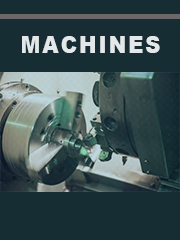Report overview
The life sciences industry is characterized by expiring patents, rising cost of R&D, shorter time to market, aggressive marketing, and growing number of strict legal regulations. Pharmaceutical manufacturers are thus embracing flexible methods to optimize the entire supply chain and reduce the time to market. These technologies can be applied to a range of processes, starting from the procurement of raw materials to the distribution of the finished goods.
This report aims to provide a comprehensive presentation of the global market for Industrial Automation in Life Sciences, with both quantitative and qualitative analysis, to help readers develop business/growth strategies, assess the market competitive situation, analyze their position in the current marketplace, and make informed business decisions regarding Industrial Automation in Life Sciences. This report contains market size and forecasts of Industrial Automation in Life Sciences in global, including the following market information:
Global Industrial Automation in Life Sciences Market Revenue, 2018-2023, 2024-2029, ($ millions)
Global Industrial Automation in Life Sciences Market Sales, 2018-2023, 2024-2029, (Units)
Global top five Industrial Automation in Life Sciences companies in 2022 (%)
The global Industrial Automation in Life Sciences market was valued at US$ million in 2022 and is projected to reach US$ million by 2029, at a CAGR of % during the forecast period. The influence of COVID-19 and the Russia-Ukraine War were considered while estimating market sizes.
Life science companies are increasingly adopting automation solutions such as MES, DCS, and SCADA for its critical processes to reduce regulatory compliance costs, improve operational efficiencies, and create a transparent environment. These solutions help in following regulations, and streamlines several clinical, laboratory, and manufacturing procedures.
We surveyed the Industrial Automation in Life Sciences manufacturers, suppliers, distributors and industry experts on this industry, involving the sales, revenue, demand, price change, product type, recent development and plan, industry trends, drivers, challenges, obstacles, and potential risks.
Total Market by Segment:
Global Industrial Automation in Life Sciences Market, by Type, 2018-2023, 2024-2029 ($ Millions) & (Units)
Global Industrial Automation in Life Sciences Market Segment Percentages, by Type, 2022 (%)
DCS
PLC
SCADA
MES
Global Industrial Automation in Life Sciences Market, by Application, 2018-2023, 2024-2029 ($ Millions) & (Units)
Global Industrial Automation in Life Sciences Market Segment Percentages, by Application, 2022 (%)
Biotechnology
Medical Device
Pharmaceuticals
Other
Global Industrial Automation in Life Sciences Market, By Region and Country, 2018-2023, 2024-2029 ($ Millions) & (Units)
Global Industrial Automation in Life Sciences Market Segment Percentages, By Region and Country, 2022 (%)
North America
US
Canada
Mexico
Europe
Germany
France
U.K.
Italy
Russia
Nordic Countries
Benelux
Rest of Europe
Asia
China
Japan
South Korea
Southeast Asia
India
Rest of Asia
South America
Brazil
Argentina
Rest of South America
Middle East & Africa
Turkey
Israel
Saudi Arabia
UAE
Rest of Middle East & Africa
Competitor Analysis
The report also provides analysis of leading market participants including:
Key companies Industrial Automation in Life Sciences revenues in global market, 2018-2023 (Estimated), ($ millions)
Key companies Industrial Automation in Life Sciences revenues share in global market, 2022 (%)
Key companies Industrial Automation in Life Sciences sales in global market, 2018-2023 (Estimated), (Units)
Key companies Industrial Automation in Life Sciences sales share in global market, 2022 (%)
Further, the report presents profiles of competitors in the market, key players include:
ABB
Emerson Electric
Rockwell Automation
Siemens
Beckhoff
Bosch Rexroth
GE
Honeywell International
IDEC
Hitachi
Omron
Yokogawa Electric
Outline of Major Chapters:
Chapter 1: Introduces the definition of Industrial Automation in Life Sciences, market overview.
Chapter 2: Global Industrial Automation in Life Sciences market size in revenue and volume.
Chapter 3: Detailed analysis of Industrial Automation in Life Sciences manufacturers competitive landscape, price, sales and revenue market share, latest development plan, merger, and acquisition information, etc.
Chapter 4: Provides the analysis of various market segments by type, covering the market size and development potential of each market segment, to help readers find the blue ocean market in different market segments.
Chapter 5: Provides the analysis of various market segments by application, covering the market size and development potential of each market segment, to help readers find the blue ocean market in different downstream markets.
Chapter 6: Sales of Industrial Automation in Life Sciences in regional level and country level. It provides a quantitative analysis of the market size and development potential of each region and its main countries and introduces the market development, future development prospects, market space of each country in the world.
Chapter 7: Provides profiles of key players, introducing the basic situation of the main companies in the market in detail, including product sales, revenue, price, gross margin, product introduction, recent development, etc.
Chapter 8: Global Industrial Automation in Life Sciences capacity by region & country.
Chapter 9: Introduces the market dynamics, latest developments of the market, the driving factors and restrictive factors of the market, the challenges and risks faced by manufacturers in the industry, and the analysis of relevant policies in the industry.
Chapter 10: Analysis of industrial chain, including the upstream and downstream of the industry.
Chapter 11: The main points and conclusions of the report.
